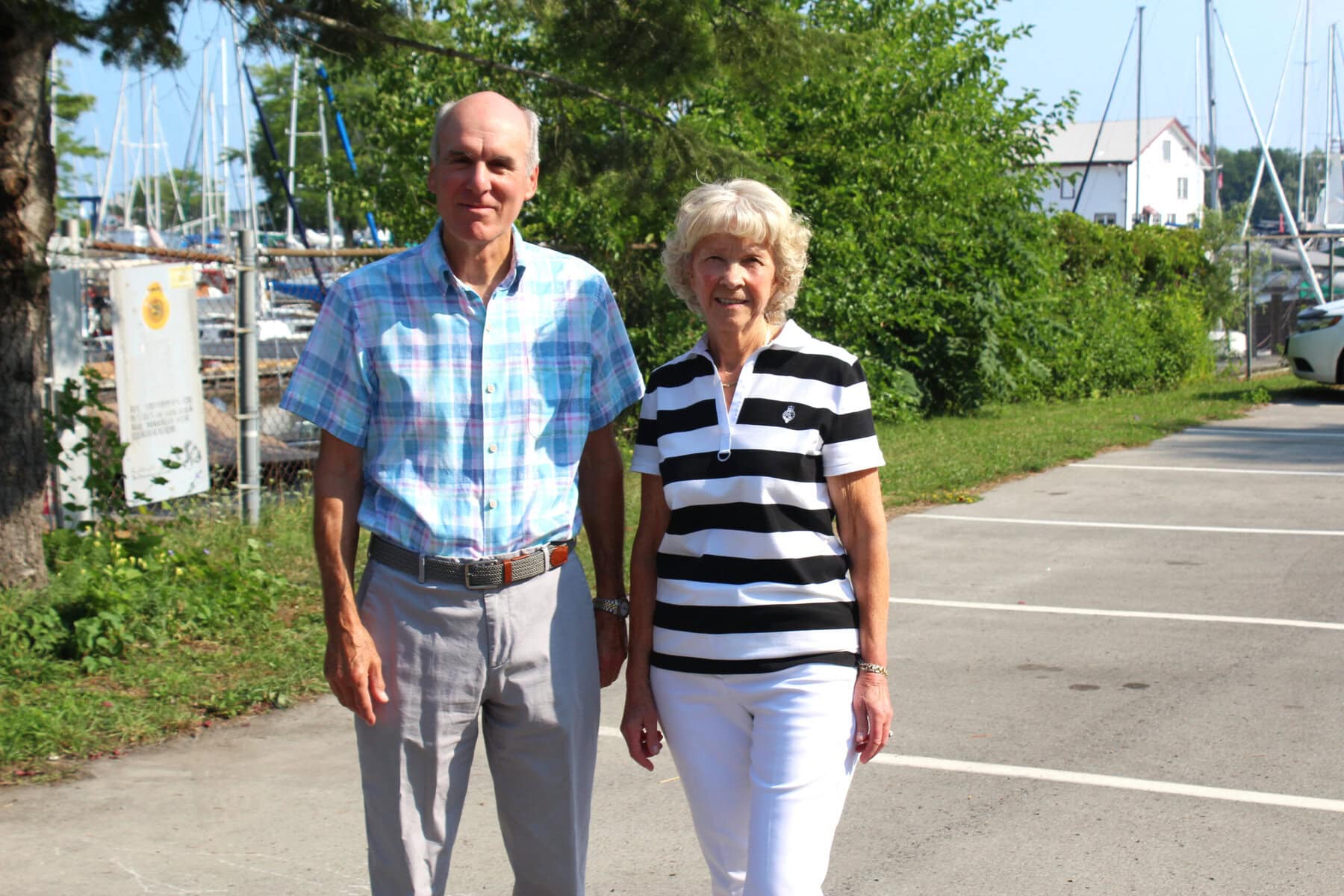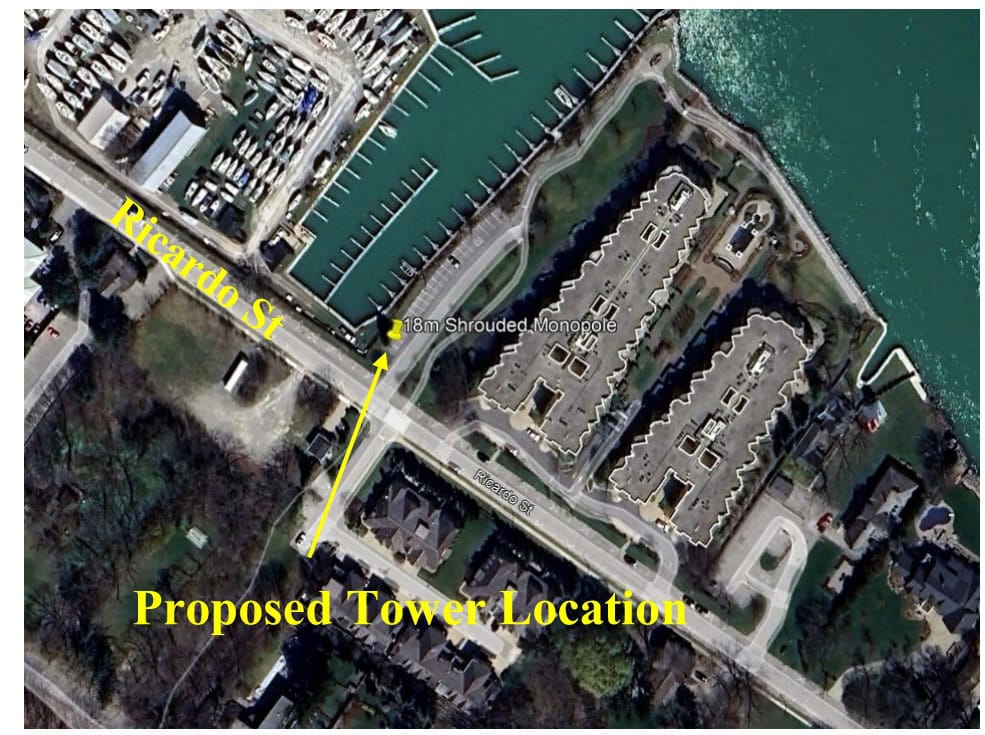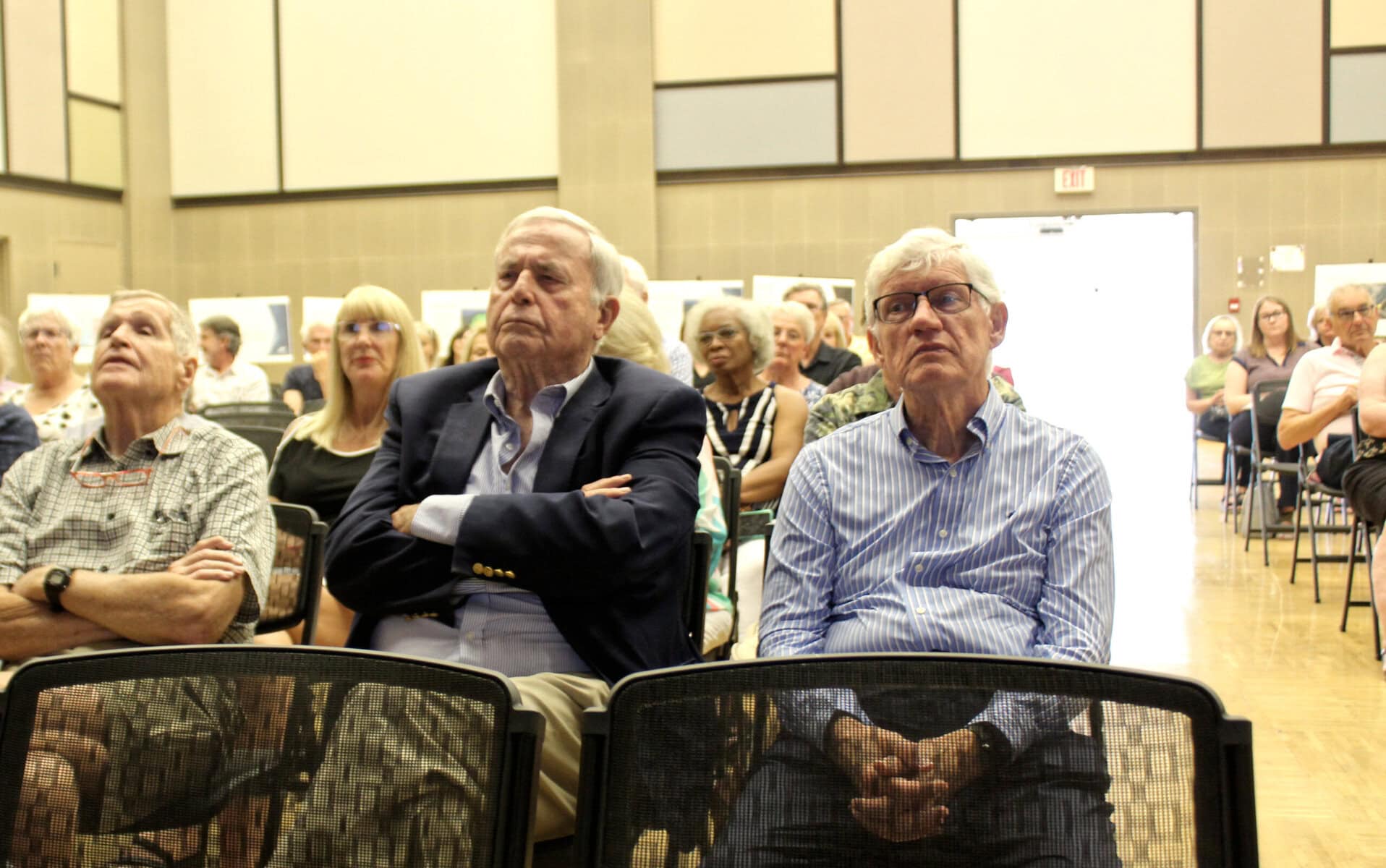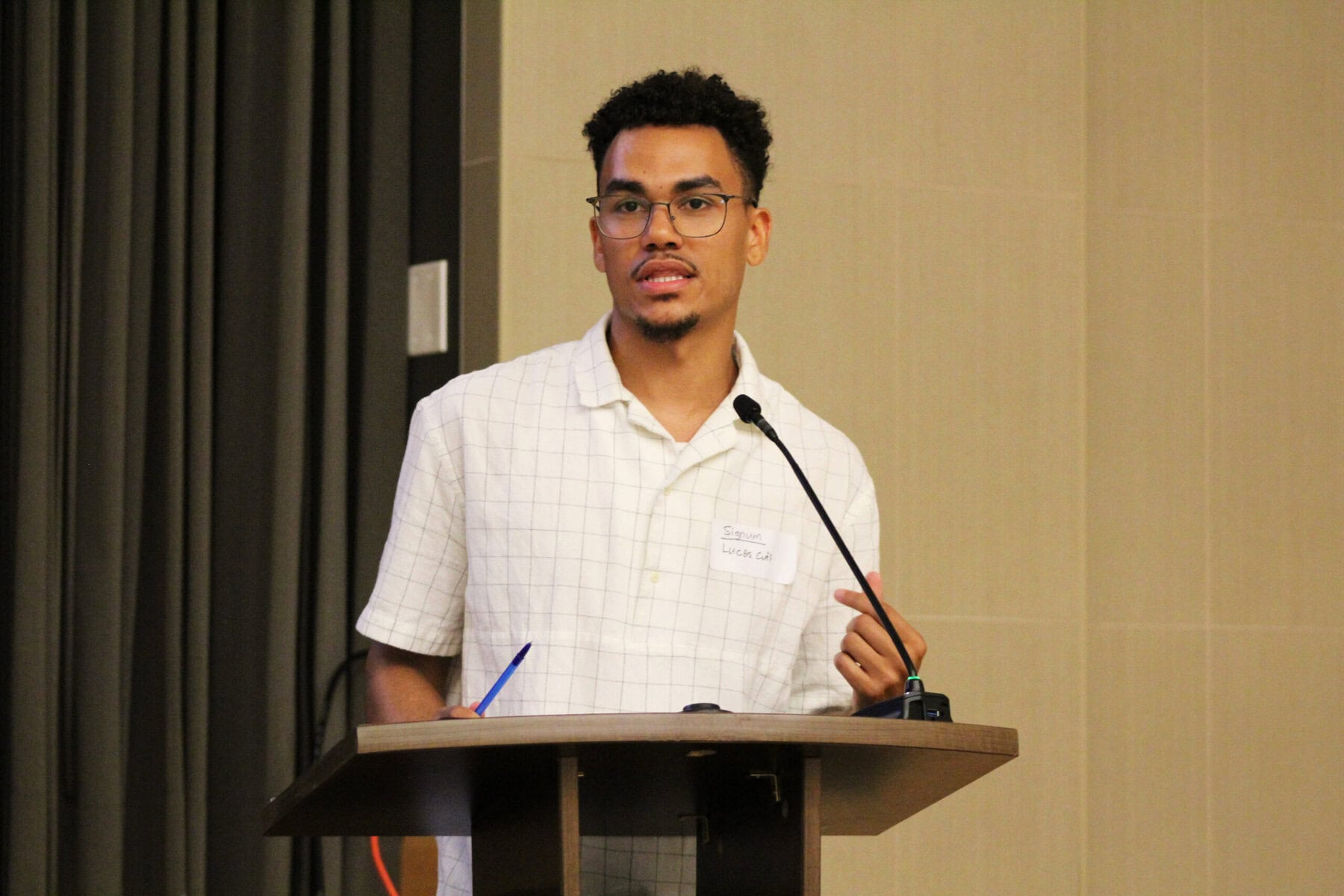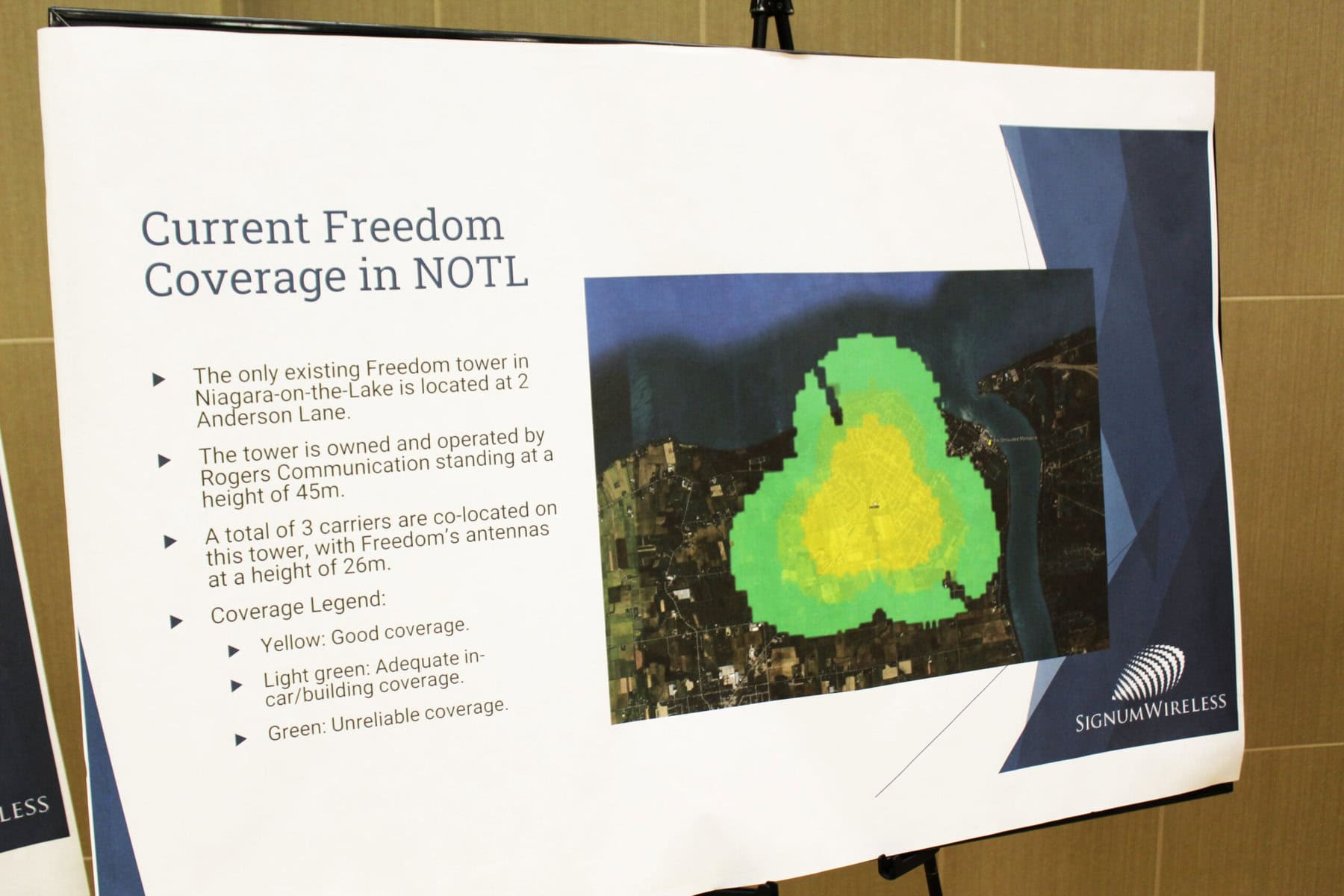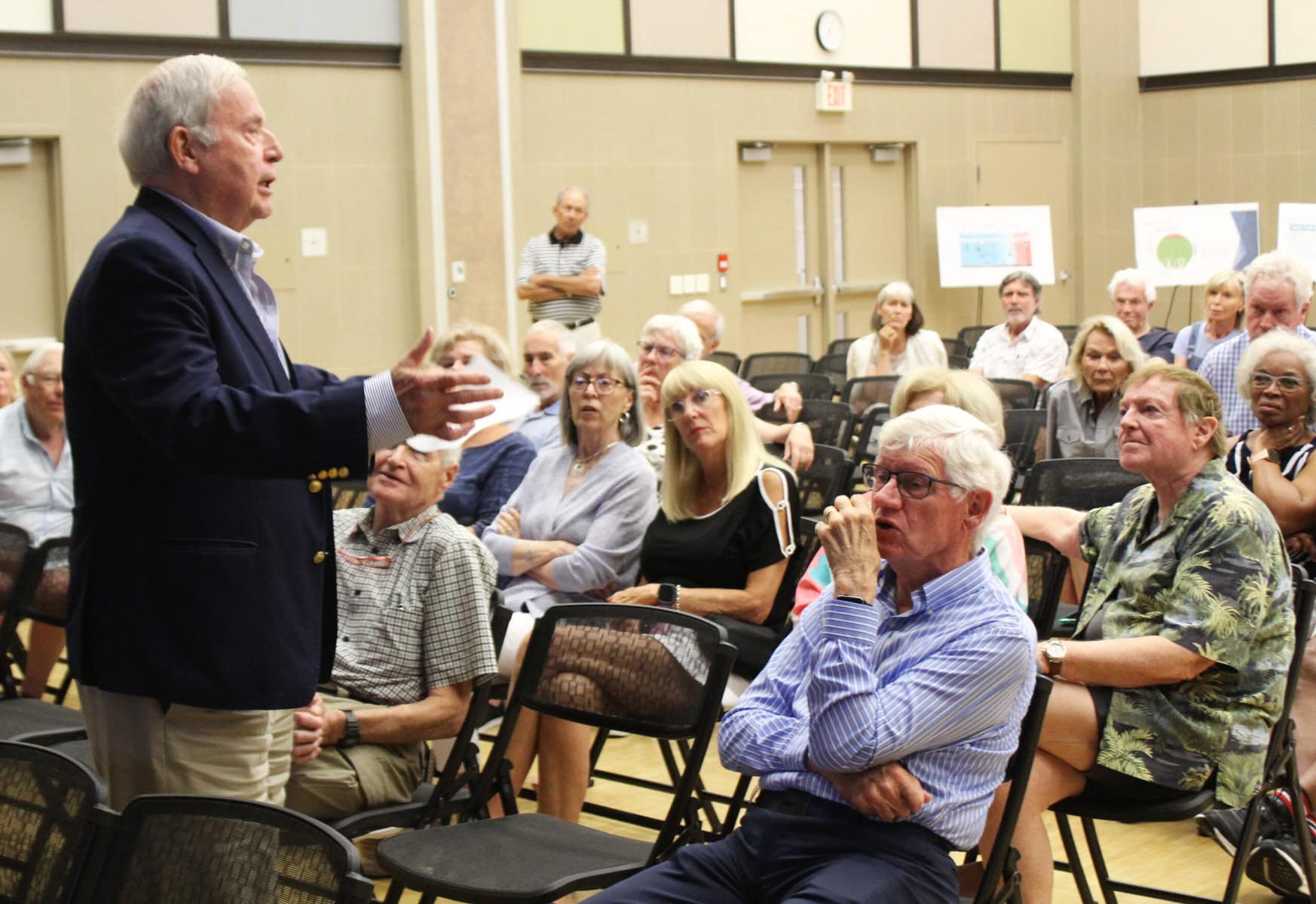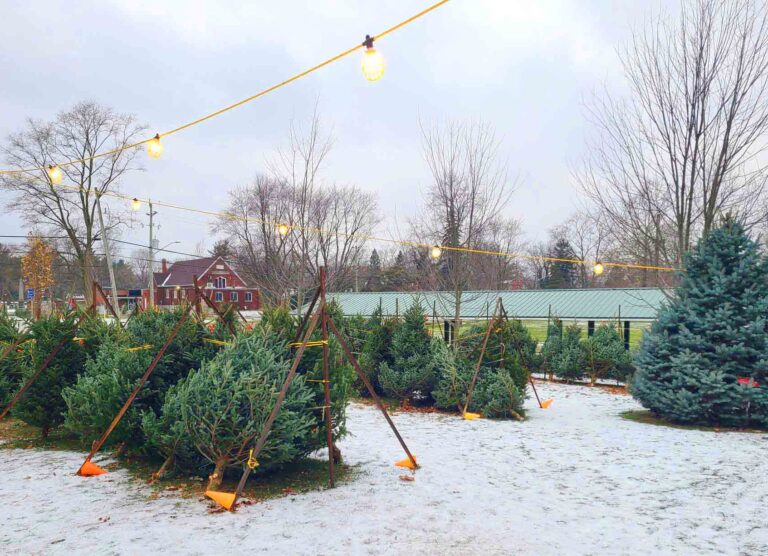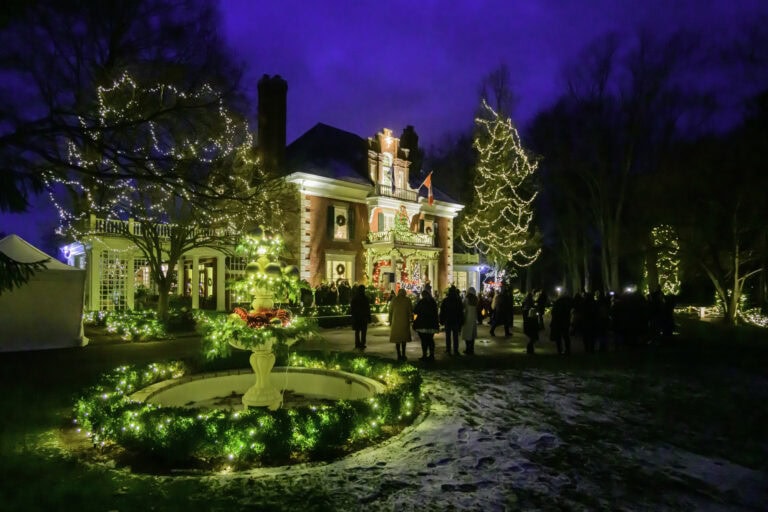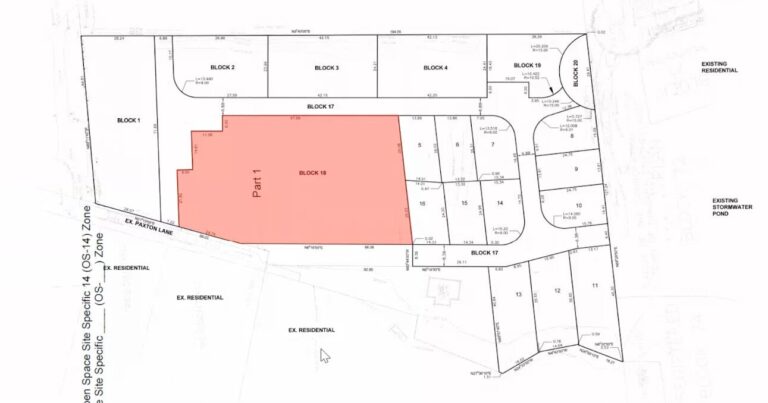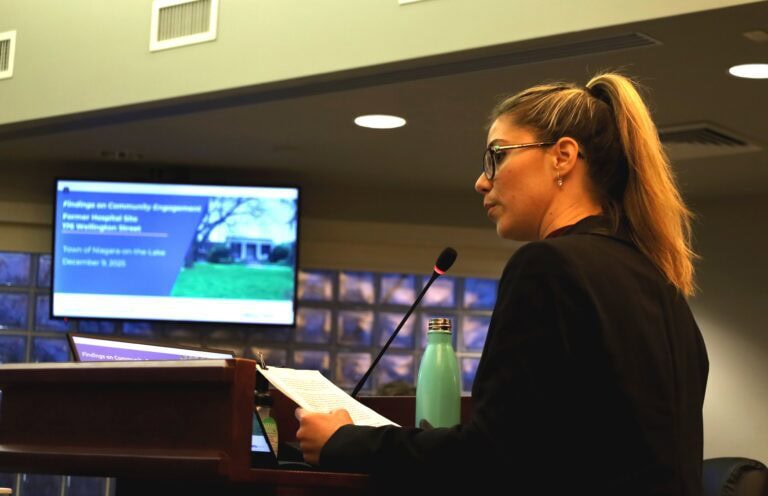CORRECTION: An updated version of this article includes the fact that Signum Wireless’s proposed tower was for more than just Freedom users. It was also multi-carrier and for emergency services.
A representative for a telecommunications company faced a hostile crowd of Niagara-on-the-Lake residents on Wednesday at the community centre, as he explained the corporation’s plan to install an 18-metre cellphone tower near Old Town’s Nelson Park.
Lucas Cuff, a municipal planner with Fontur International Inc., who’s contracted to Signum Wireless, led the public consultation at the NOTL Community Centre to gather feedback from the community on the project.
However, several residents, particularly from the nearby King’s Point neighbourhood, opposed the plan and voiced their objections throughout the meeting.
From the outset, some of the few dozen attendees disrupted Cuff’s 30-minute presentation, laughing and interrupting repeatedly.
During the following hour-long question period, multiple residents made impassioned speeches, criticizing the idea and expressing frustration with both Cuff and Signum Wireless.
“This presentation is a sham,” said one resident during the Q&A portion of the meeting.
Multiple residents who spoke with The Lake Report said the tower, which is planned for installation near the entrance of Nelson Park at 215 Ricardo St., would be an “eyesore” in a place both locals and tourists enjoy.
Before the meeting, King’s Point residents Don Dinnin and Catherine Cornell told The Lake Report that the tower would be too close to homes and that better alternatives exist.
“This is the most densely populated area in the Old Town,” said Cornell.
In a written statement on the project given to The Lake Report, they said much of Old Town has cell service from Bell Mobility, which has a network of small cells rather than a tower, and that the Ricardo Street area should have a similar network instead of a tower.
Cuff responded to this suggestion during the meeting, saying small cells wouldn’t provide the necessary coverage for the area.
Initially, he said, Signum Wireless considered two locations: the NOTL Sailing Club and the current proposed site at Nelson Park, which are a four-minute walk away from each other.
After the sailing club was ruled out, the town recommended Nelson Park, which Cuff said also offers an easier path to approval from the company’s perspective.
That comment sparked criticism from attendees, including Couns. Gary Burroughs, Sandra O’Connor and Andrew Niven, who questioned whether Cuff was implying the town approved the project.
“Check back with the town before you say there was town approval,” said O’Connor.
Cuff clarified that municipal governments do not have authority over cellphone tower approvals, which fall under federal jurisdiction.
When one audience member suggested the old municipal hospital site as an alternative, Cuff said the elevation of that land makes it unsuitable for tower construction.
“They selected (the Nelson Park location) because it works for them,” Dinnin said.
Criticism was also directed at the tower’s height and the federal regulation that would allow it to be increased by up to 25 per cent after construction.
Cuff said such increases are rare in his experience.
Residents also challenged the accuracy of photo simulations presented by Signum, saying they failed to show how the tower would appear in real life.
The tower is intended to serve customers of Freedom Mobile, who currently experience poor service in that area. It would also be multi-carrier and for emergency services.
Dinnin and Cornell acknowledged that a coverage gap exists along Ricardo Street.
“King’s Point owners recognize that there is a cellular service gap for certain wireless carriers,” they said, but added they want “a better solution than a 60-foot cell tower at the entrance to Nelson Park.”
At the meeting, Cornell said, “We’re not here to solve Freedom’s problem.”
Cuff also addressed other concerns, including the site’s flood risk, saying the tower would be built to withstand flooding.
“Flooding won’t impact the tower,” he said.
He dismissed claims that cellphone towers reduce property values and presented information showing that radiofrequency emissions from towers are well below levels considered harmful to human health.
Following the event, Cornell told The Lake Report via email that more time is needed before any decisions are made.
“The Aug. 25 consultation endpoint has to be extended considerably,” she said.
Cuff was the only representative from Signum Wireless at the meeting. No senior executives attended or presented.



